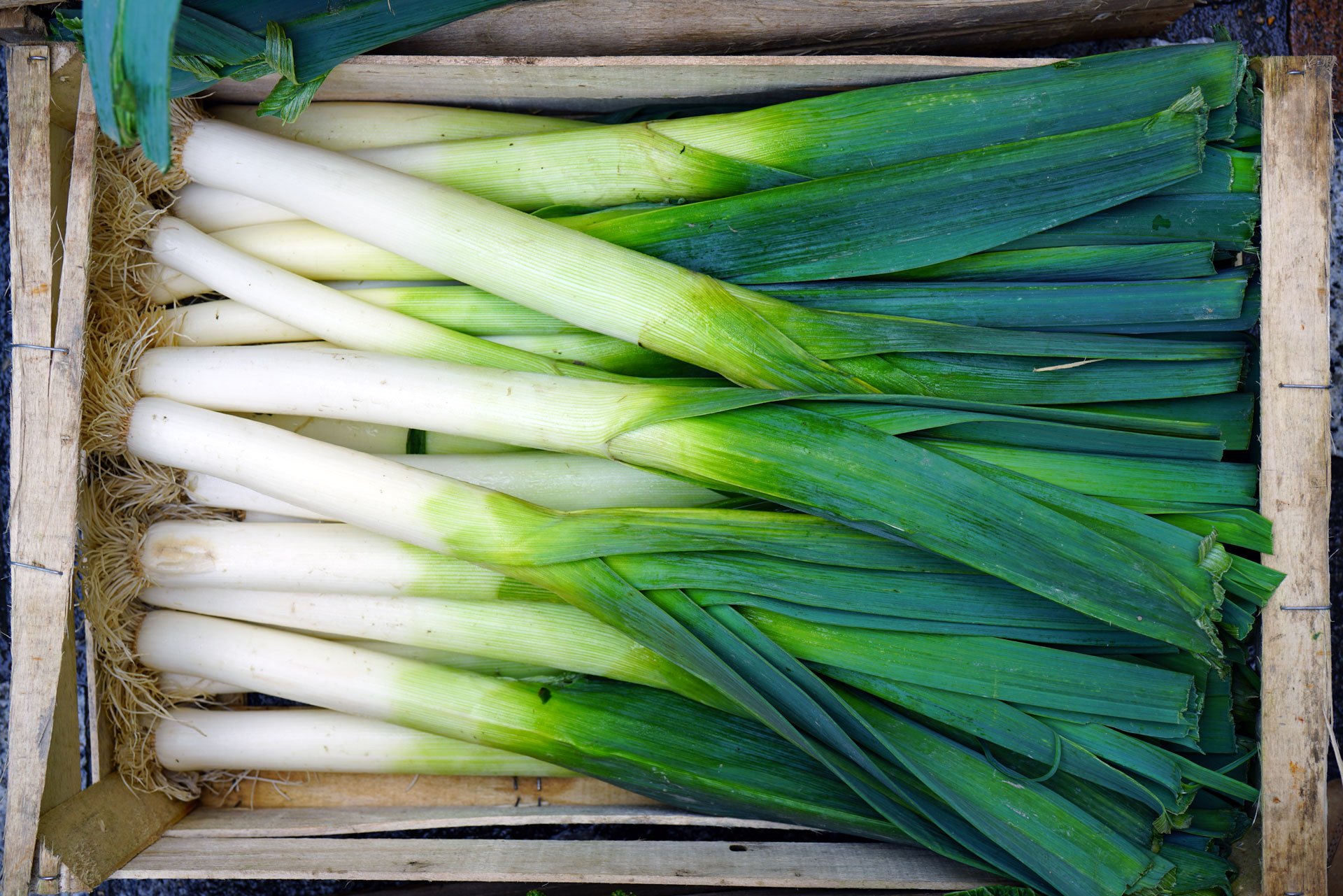Real Food Encyclopedia | Scallion (Green Onion)
The terms “green onion” and “scallion” (Allium cepa and Allium fistulosum) are common names used interchangeably to describe a long, thin, tubular allium with a distinctive, but mild, oniony flavor. They come from two different kinds of plants: bunching and bulbing onions, and it’s hard to know which one you’ve got. Whether you love them or hate them, call them scallions or green onions, this popular vegetable is one of the first flavors of spring in many seasonal markets.
Did you know?
- Scallions are also known as the “Welsh onion,” but not because they are from Wales. The name is derived from the old German “welsch” which translates as “foreign.”
- You can tell the variety of scallion you have by looking carefully at the bottom of the green leaves near where they turn white. If the leaf cross section is “D”-shaped (or has a flat side), it is A. cepa. If “O” or round, it is A. fistulosum.
- Scallions, like other alliums such as shallots and leeks, are part of the lily family.
What to look for when buying scallions and green onions
Scallions are about 12 inches long and graduate in color from white or red root ends to bright green tops that are hollow.
Allium cepa, the bulbing onion, is the kind you typically have in your kitchen bin. They will have a white or red base, depending on their variety, that shades to light and then dark green at the tip of the plant. The upper end of the scallion should be dark green with no sign of yellowing. They should be straight; curled shoots are a sign of age. Choose thinner scallions for milder taste and thicker ones for a more assertive onion flavor or for recipes, such as roasting and grilling, that will benefit from a sturdier vegetable.
Sustainability of scallions and green onions
Pesticides
On the commercial level, fungicides and pesticides are sometimes used to eliminate any risk of crop failure, particularly when the scallions do not benefit from crop rotation, which would naturally keep pests at bay. If you are shopping for scallions at the supermarket, it may be best to choose organic if you want to avoid pesticide exposure. At the farmers’ market you can discuss growing conditions directly with the farmer.
Seasonality
In warmer climates, A. fistulosum grow year-round and can be propagated by dividing. In colder climates, north of Zone 6, the allium is direct-planted in the spring from seed.
A.cepa can be grown from seed or sets (seedlings that are started in a greenhouse and replanted in the field). They are daylight sensitive and require a certain number of hours of sunlight to trigger bulb formation. They are susceptible to a number of pests and diseases. Crop rotation is critical for the health of the plants, which are often treated with a number of topical inputs to stave off failure.
Eating scallions and green onions
Storing
Preventing moisture loss is the key to storing scallions. Wrap them in damp paper towels or reusable plastic bags to keep them fresh and crisp.
Scallions have a milder onion flavor than other alliums. The root end is tender and more complex than the green tops, which have a strong, pleasantly herbal quality. Like all alliums, scallions take well to cooking and sweeten under the heat of being roasted, grilled, sautéed or simmered.
Cooking
Raw scallions are often used in salads or as a flavorful garnish, sometimes as a substitute for chives.
- Scallions and potatoes are great together; slice the green tops and sprinkle on twice baked potatoes. They are delicious in the Irish potato recipe, Champ, which features heavily buttered mash studded with handfuls of finely minced scallions.
- They are featured heavily in Asian cuisine, in stir-fries and as the key ingredient, of course, in scallion pancakes.
- The calçotada is a traditional Catalan feast of grilled green onions dipped in Romesco sauce and washed down with copious amounts of wine poured directly into diners’ mouths from a spouted glass jug called a porró. The green onions are grown by burying the majority of the plant so that it stays white and tender. Scallions are great on the grill and make a fine reason for an early spring party of your own.
- Scallions have come under increased scrutiny as the source of food borne illness outbreaks. It is critical to thoroughly clean the hollow stems which easily trap dirt and bacteria, particularly when serving them raw. At home, you can wash the hollow part by slitting it open and holding it under running water. Or consider blanching your prepped scallions before adding to your recipe to reduce your exposure to potential contamination.
Preserving
Scallions make an easy and flavorful fridge pickle. Cut them into lengths that fit in a sturdy jar and pack them in tightly. Bring equal parts of water and vinegar to a boil and season with salt, a bit of sugar and perhaps some dried spices such as mustard seeds, celery seeds or chilies. Pour the hot brine over the scallions. Cool, cover and refrigerate for at least one day and up to three weeks.
You can regrow scallions by setting the frilly roots in a jar of water on the window sill. Top up the water when it threatens to evaporate and within a week you should have enough green to chop and use in your recipes.
Nutrition
Scallions share the same compound, Allicin, also found in garlic, that has been shown to fight bacteria and fungi, lower cholesterol levels, and act as an antioxidant. They also offer starch, sugars, cellulose, fatty acids, pectin and Vitamins A and C. In traditional Chinese medicine, the white portion is used to treat everything from the common cold to kidney stones.
Top photo by Robert Keenan/Adobe Stock.


